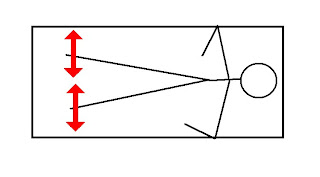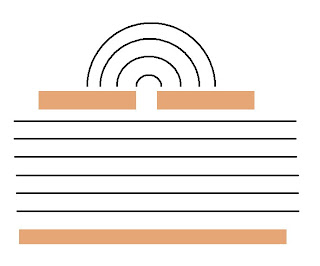“Right! Everybody up to the front!” comes the cry, and you and your classmates all crowd round the equipment set up at the front. You can hardly see, people whisper around you and you’re losing interest. The teacher runs through the experiment nice and quickly so you can all get back to your seats and do the all-important write-up: method, results and conclusions. It’s hard to see the point of these experiments.
For me, it’s all about joining it, really getting to take part. I don’t think that one student writing the results on the board is all that can be expected from undertaking a physics experiment. For the most part, the experiments are simple, safe and totally repeatable, so if someone makes a mistake you can just start again. I’m here today to encourage you to shout out and say “I’ll help” or when the question of “Would anyone like to lend a hand?” rolls around, chime in with a “Me!”.
Once you start doing small things, it’s easier to learn, more interesting and actually more fun. Now, I’m not saying that we should all set up a Physics Experimentation Room in our wardrobe like a crazy professor, but looking and thinking at things around us are the most important tools you can have for getting into Physics.
So here are a couple of experiments you can do at home, just to get you started. They all involve being in the bath, so I’m afraid you’ll have to get wet, but we all have to clean ourselves at some point, right?
EXPERIMENT 1: FREQUENCY AND RESONANCE
The title might be a little scary but actually we’ve probably all done this as kids (and been told off for splashing the water all over the floor…). Frequency is how we describe the speed of a repeating action, like the swing of a pendulum in a grandfather clock, or how many turns per second your bike wheels are going at. So, we’re going to use our legs, sitting back in the tub with them straight out in front. Move them apart and back together, slowly at first and you’ll find it’s hard work.
Speeding up only makes it harder, but at a certain frequency it feels like the water is taking over! Wow! You legs are now moving in and out according to the water’s will, the movements getting wilder! And this is resonance, or the resonant frequency of the system (this system is your legs and the water). At the resonant frequency, the size (also known as amplitude) of your movements (called oscillations) vastly increases. There are tons of real-world examples, with this phenomenon responsible for some pretty scary things, like rippling bridges which oscillate wildly when the winds hit resonant frequency. Look on YouTube!
EXPERIMENT 2: Interfering waves
Now, this one needs the bath water to be nice and still, preferably without too much of your legs above the surface, so lie back and relax til it’s flat. We want to make the same sort of ripples that a dripping tap would make in the washing-up water, and we do this with our fingers. Have a practise, using one finger, straight into the water, and moving (oscillating) it up and down a little. You should have nice circles spreading out. We want to see what happens when two of these waves meet each other from opposite directions, so we need two fingers, one on each hand, about 20cm apart.
So, in your still bathwater, start them both moving, up and down, and the same time. Watch the area between your fingers, and look at the height of the waves. Now, this can be a little difficult to see, but you should find that in some places the waves cancel each other out, and the water is much flatter, and in others, the waves get even bigger. The way these waves interact is called interference. When they cancel each other out (the flatter bits) it’s called negative interference, and when they add up to a larger size wave, it’s called positive interference. Because waves we encounter in day-to-day life are generally invisible, it’s hard to spot, but this is why microwaves rotate. Just like our water waves, inside the white box negative interference means that in some spots, the food won’t cook, so it gets rotated so that overall everything gets nice and edible!
EXPERIMENT 3: DIFFRACTION
Our final experiment also needs a flat bath, but with your knees poking just out of the water, pretty close together about 1-2cm apart. This time we don’t want a point wave, we want a bar wave, so make your hand flat, and move it up and down in the water with the palm facing you, like you’re judo-chopping, only you don’t have to be very violent to get a good wave.
It’s best just to send one wave at a time here, so oscillate (move up and down) your hand once and a long wave should head towards your knees.
What happens after your knees is quite odd! The wave has turned from a flat wave to semi-circular! It’s like the difficulty of travelling through the small gap has made it change! This is called diffraction, and it occurs when a wave goes through a gap that is smaller than the wavelength (see Behind the Rainbow for more on wavelengths), and it can be useful, but it can also ruin experiments, so watch out for it!
So the experiments are over, you can get out of the bath now, if you want, and it's ok you can blame any spit water on your new experimental side, just one of the joys of home Physics!




No comments:
Post a Comment